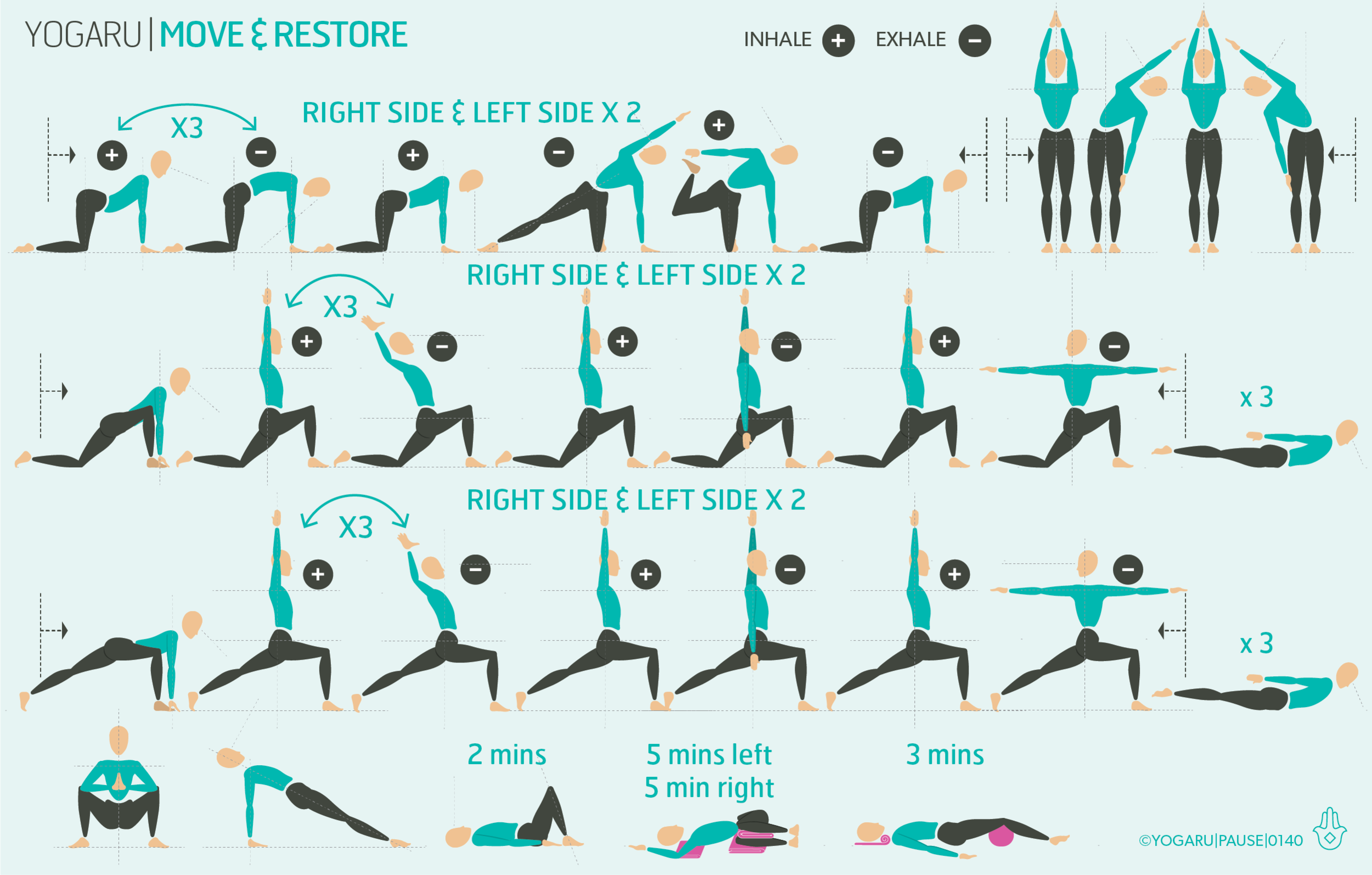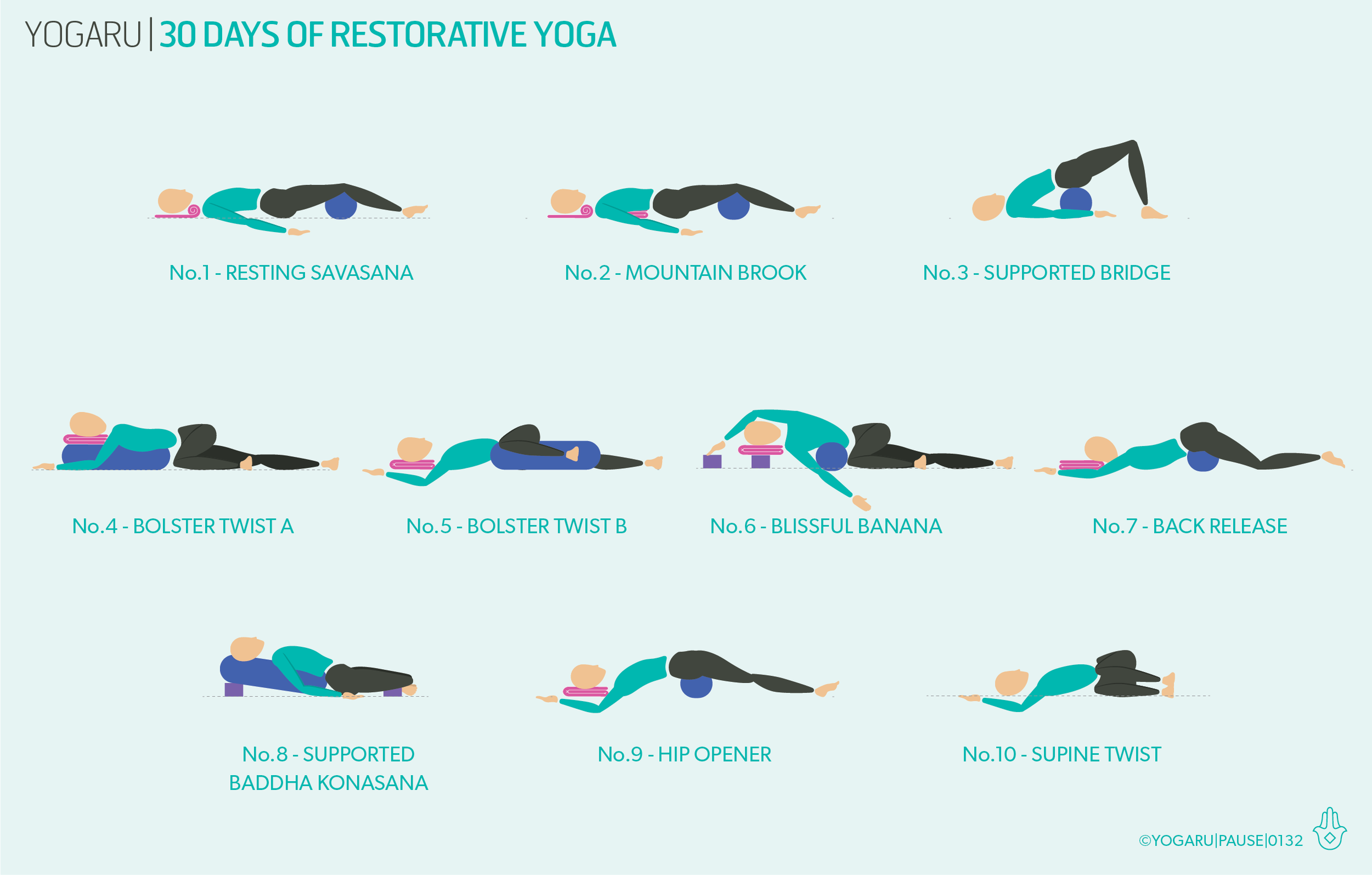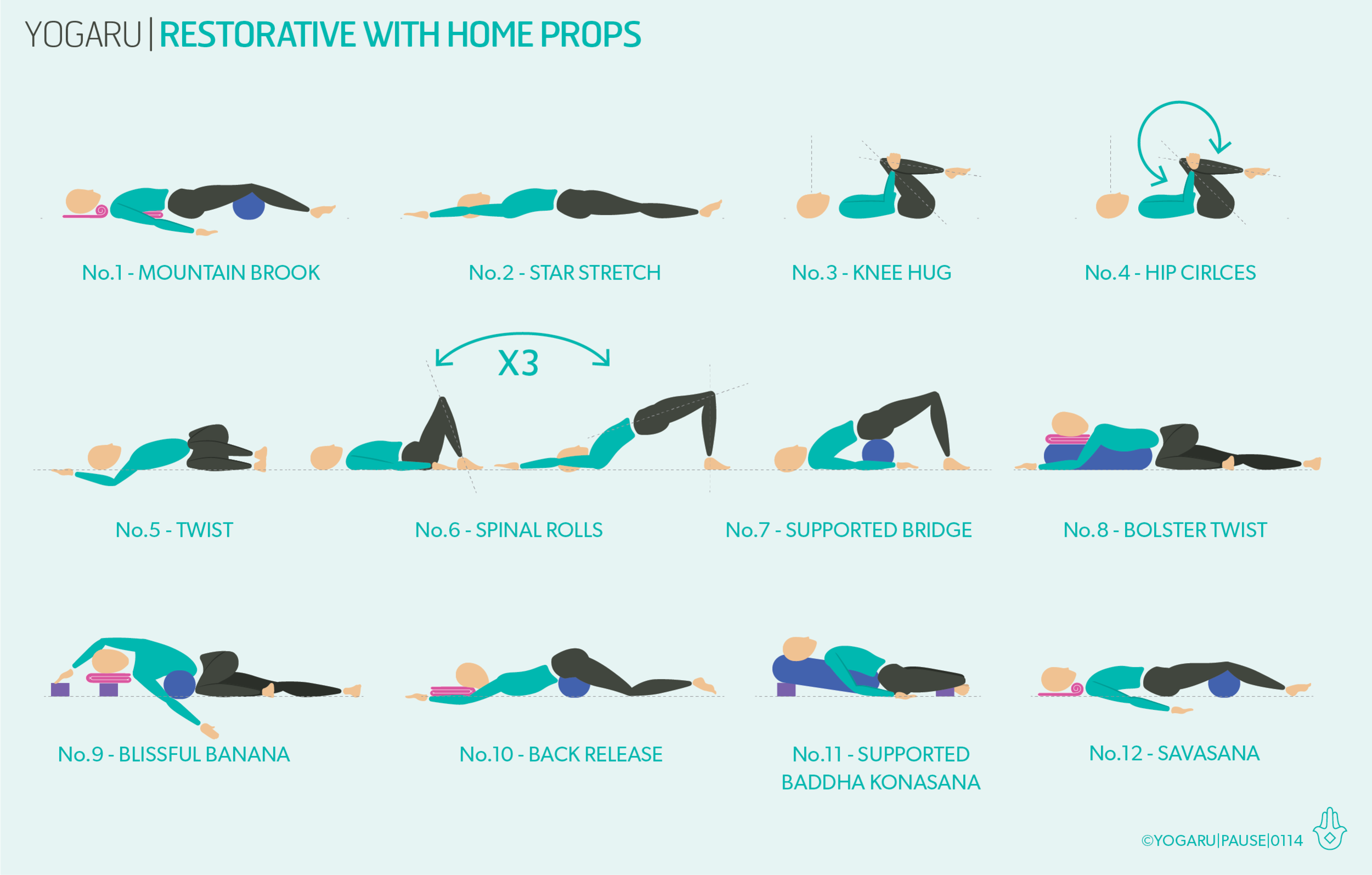This sequence is also available on YouTube.
DOING & NON-DOING
When I completed my recent studies on the nervous system and restorative yoga with Yoga Medicine I was curious to experiment more with the benefits of restorative yoga to the nervous system. I started including restorative poses at the end of my practice as a way to add more of this deeply heeling therapeutic practice into my day and continue to relearn how to relax. I started to notice that by adding some restorative at the end of my practice I was teaching my nervous system to be more malleable, swapping more smoothly from activity to relaxation, and appreciating the value of both. I noticed a few incidents where I was able to pause before I reacted to situations with the kids, and deal with it in a logical way rather than a knee jerk reaction. I felt less depleted at the end of a day when I felt I had given something back to my energy stores at the end of my yoga practice. On the days where I practiced a purely restorative session in the evening I noticed I would settle to sleep the minute my head hit the pillow, and better still, not experience the 4am disturbances to my nights sleep that I had slipped into.
I am currently teaching this style of class online on a Friday morning. You can practice live with me or practice in your own time with the class recording. Experience the benefits for yourself!
Here are some of the many benefits of restorative yoga: regulates the nervous system, balances emotions, balances hormones, eases stress & anxiety, boosts immune function, improves healing capacity, eases muscle tension, eases back and neck pain, reduces chronic pain, eases fatigue, improves sleep, improves overall wellbeing.
BUILDING A RESILIANT NERVOUS SYSTEM
While we can’t consciously control the nervous system we can create favourable conditions to influence our bodies response to external and internal sensory stimulus. Stress, or the sympathetic nervous response, is where we create, get our day's activities done and exercise. Resting or the parasympathetic nervous system is where the body clears out the ‘doing’ hormones, restores homeostasis balance to the body and creates an optimum environment for all the functions of the body. Both work in tandem and are a natural part of being human. This blended method of moving and restoring honours both the yin and yang within our day and helps build a resilient nervous system. To lean more about how the nervous system works and what happens when it tips into too much ‘doing’ have a read of my Finding calm article.
EXPLORING MOVE & RESTORE IN YOUR PRACTICE
This sequence starts with a movement practice with simple purposeful flows to build mobility and strength. There are three mini flows in the movement practice. Move slowly through the poses within each flow and then repeat each one with the breath guides above the poses. The sequence then transitions from doing to non-doing with a restorative practice to target the nervous system. In restorative yoga we consciously relax the body to bring it into a deep state of rest and create a healing environment. The goal of the restorative stage of this sequence is to replenish, absorb the benefits of moving and give back to your body's energy stores. The poses are held for longer periods (you will see the suggested hold times in the sequence) with the support of your blankets to help you to feel effortless comfort. Although props are king in restorative yoga there is plenty you can achieve with just a few blankets to support you and keep you warm. You will need three blankets for this practice. See below for alignment cues on your main restorative pose.
ALIGNMENT CUES
Have a read of the tips below and either print out the sequence or save it onto your device.
The peak pose of the movement sequence is Salabhasana/Locust, a fantastic full back body strengthener:
Lie on your front, arms by your sides, palms facing your body, forehead resting on the ground.
Inhale, press into your pubic bone, lift your head, upper torso, arms and legs, lift with the whole back. Reach your chest forward and up
Extend your arms towards your feet, lift your legs up and press through the balls of your feet, roll your inner thighs up.
Broaden through the collarbones, firm your shoulder blades onto your back, back of the neck long, gaze slightly forward.
RESTORATIVE POSE ALIGNMENT CUES
The props you’ll need for the restorative poses are:
1 x bolster - or 2 towels, wrapped around a horizontally rolled pillow and tied to secure.
2 x yoga blankets - or any wool, thick cotton or fleece blanket with density.
No.1 - Constructive rest
Start lying on your back, your knees bent, feet mat distant apart and knees knocked in together. Place your hands on your belly and feel the breath move through you. Take four rounds of 4/6 breath, inhaling for the count of 4 and exhaling for the count of 6. Keep the breath as gentle as possible, notice if you are holding any tension in your shoulders and upper chest. Pause after and notice any change this simple breath observation has made to your body and mind.
No.2 - Supine twist with raised hips
Fold a blanket in four, smooth it out and accordion fold it in three along the short side and place it in the centre of your mat. Place your second blanket folded at the top of your mat and a third blanket folded beside your mat. Sit your left hip and left thigh along your accordion fold blanket, place a the third folded blanket between your thighs, lie on your side. With arms in cactus position, open your right arm to your right and come into the twist. Place the second blanket under your right shoulder to ensure it is supported.
No.3 - Savasana
End your practice with at least 10 minutes of Savasana or Resting Pose. Lie supine on your back, legs stretched out, arms slightly away from your body, palms facing up. Legs slightly apart, feet fall out to the sides, soften your shoulder, back of the neck long. You can add an optional bolster under the knees or a blanket roll under the neck. Gently close your eyes, let the body become heavy and melt into the support of the ground. Soften the muscles across your forehead, releasing all tension, gaze inwards. Let all the muscles and bones of your body release.
To save the images for personal use click and hold down the image until the ‘save image’ option appears; on Mac hold down ‘control’ and click the image to get the option box; on PC right click on the image to get the option box. Scroll down in the ‘option box’ and click ‘save image’.
Ruth Delahunty Yogaru




